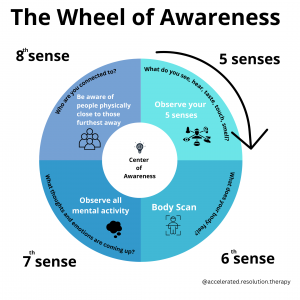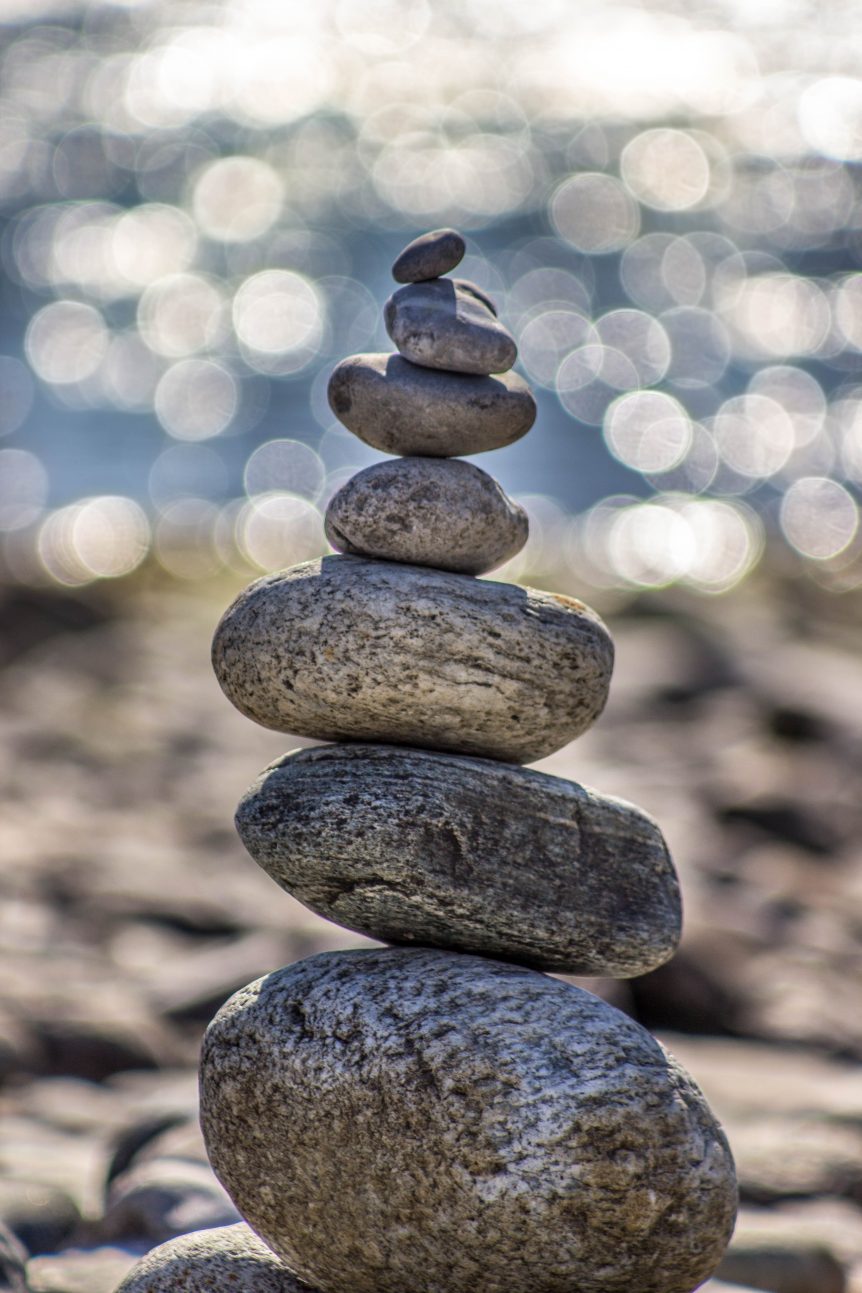Although the concept of Mindfulness is thousands of years old, the demand for a practice that calls us back to the present moment may be even more significant today. With the advent of technology, you may notice an increased challenge to stay focused and present. While you may love the connectivity provided by social media and smartphones, you often feel your attention is fragmented. Adding constant stimuli to an ever-active, stressed brain may make you feel burned out, agitated, and emotionally reactive.
If you are grappling with mental health challenges like anxiety, depression, OCD, CPTSD, and ADHD, it is common to experience feelings of frustration, overwhelm, and a lack of control.
To increase balance and emotional well-being in our lives, Mindfulness has gained recognition as a transformative practice in many spaces. Practicing Mindfulness boasts improved emotional regulation, stress reduction, greater focus, and more self-compassion in coping with day-to-day scenarios.
What is Mindfulness?
Mindfulness is the practice of non-judgemental awareness and observation of the present moment. You develop resilience and focus as you train your mind to stay in the present, observing your inner and outer experiences non-judgmentally.
How does Mindfulness help deal with mental health?
- Enhanced Self-awareness: Mindfulness helps you become more aware and attuned to your thoughts, emotions, and bodily sensations. As you notice the arising of these occurrences, you can observe them with non-judgment.
- Emotional regulation: As self-awareness improves, you develop a better relationship with your emotions. Mindfulness allows you to observe and respond to emotions with greater clarity and less impulsivity and reactivity, prompting an overall emotional balance.
- Stress reduction: Stress shows up when the demands of a situation exceed the available resources to meet them. As you develop a long “to-do” list in your head, it is impossible to stay in the present moment. As Mindfulness calls for complete focus on the present, you can decrease stress and develop healthier coping strategies.
- Improved focus and concentration: As you practice Mindfulness regularly, you flex the muscle of your attention on the task at hand. Mindfulness helps develop the prefrontal cortex, the brain area involved in decision-making and execution of tasks.
- Increased Well-being: Practices of Mindfulness such as the metta meditation: “May I be Happy, May I be Healthy, May I be at Peace,” help you develop a greater sense of well-being by promoting self-acceptance, gratitude, and a greater connection to the present moment.
- Better Relationships: Mindfulness helps improve your emotional intelligence. When you are more aware of your emotions and can watch them non judgmentally, you can observe them without reacting immediately. Less stress and reactivity translate to more relaxed and calm responses. Mindfulness also helps develop more presence around others, allowing you to give them your full attention, making them feel important and cared for.
What techniques can I use to practice Mindfulness?
There are many different exercises to practice Mindfulness, such as meditation, breath awareness, body scans, or engaging in everyday activities with full attention. Any task done with the idea of Mindfulness will help to develop your focus on the present moment, free from distractions and preoccupations.
The Wheel of Awareness
The Wheel of Awareness is a map of our awareness developed by Dr. Dan Siegel, renowned psychiatrist, neuroscientist, and Mindful Awareness Research Center at UCLA. Here is a quick explanation of how to use the Wheel of Awareness.
When you practice the wheel of awareness, picture a wheel divided into two components: the hub and the rim.
The hub represents your center of awareness, your source to be present, observing inner and outer experiences. The rim represents aspects of your experience you can direct attention towards. It is divided into different segments. By systematically moving our attention around the rim, we explore and integrate the diverse dimensions of our experience.
How to use the Wheel of Awareness:
- Settle into a comfortable position: Find a quiet space to sit or lie down without distractions. Take a moment to relax and prepare yourself for the practice.
- Visualize the wheel: In your mind’s eye, imagine a wheel with a hub at the center and a rim divided into segments. The hub represents awareness, and the rim represents different aspects of experience. Focus on awareness itself, the center of the wheel.
- Next, Focus on your five senses: what do you hear, see, taste, touch, and smell at this moment?
- After, focus on the sixth sense. Move to your awareness of your body, scan the body for any sensations, observing them without judgment.
- Move to the wheel part representing the 7th sense: thoughts, emotions, and other mental activities. Watch your thoughts come into your awareness and depart. Do they leave quickly? Do other thoughts replace them? Is there space in between thoughts? Observe without judging.
- Move to the part of the wheel representing the 8th sense of interconnectedness. Focus on the people physically close to you and those further away. Focus on the people in your life who are emotionally close to you, friends, family, then spanning further and further away, neighbors, state, country, and finally, the world.

Perform a Body Scan Meditation
The body scan meditation is one of the first steps practiced in the Wheel of Awareness as part of the sixth sense. It can be performed at any time of the day to alleviate tension and increase Mindfulness. To perform a body scan, move your awareness from the top of your scalp and down your body. You can do this anywhere, but to start, you should do it in a quiet, comfortable place.
- Sit in a relaxed position.
- Close your eyes.
- Bring attention to taking deep breaths and the air going in and out of the body, allowing it to anchor you to the present moment.
- Scan the body starting from the top of your head and gradually moving downward, focusing on any sensations.
- Observe any physical sensations: warmth, coolness, tingling, pain, relaxation. Observe these sensations without judgment.
- Continue working your awareness down the entire length of the body.
- Return to focusing on the breath.
Notice the 5
The 5,4,3,2,1 coping strategy is a mindfulness and grounding technique to help bring you back to the present moment. It engages your senses to shift your focus back to the immediate environment.
It identifies five things you can see: colors, shapes, and textures.
Next, identify four things you can touch, notice the texture, or other things you can physically feel.
Then, acknowledge three sounds you can hear in your environment: birds chirping, traffic, or clocks ticking. Listen without judgment.
Recognize two things you can smell in your environment: perfumes, fresh air, and coffee.
Finally, focus on one thing you can taste and identify. It could be the lingering taste of a recent meal, a mint, or just the natural flavor in your mouth. Take a moment to experience this taste fully.
How is Mindfulness used and cultivated in an ART session?
Accelerated Resolution Therapy incorporates mindfulness practices into every session, facilitating an increased sense of Mindfulness as a natural byproduct of the positive brain changes experienced during the therapy.
As ART is a bottom-up therapeutic approach, it employs somatic experiencing and awareness of the present moment. ART therapists will guide you into recollecting thoughts, sensations, and emotions as you are guided through bilateral eye movements. By developing the capacity to observe emotions and bodily feelings without judgment, you can engage in a more profound experience and deeper access to healing.
You may experience perspective shifts and reconsolidations of fragmented, disjointed memories during a session. Clients have reported feeling more distance from traumatic images than in the past when there was no time separation between the traumatic event and the present moment. The result is that you will feel a greater ability to watch and separate yourself from these experiences. You walk away with tools to grow your own Mindfulness practice and will notice yourself showing up for your life with greater ease and more presence.
Symptoms such as disconnection, dissociation, unmanageable stress, and overwhelm frequently stem from various forms of trauma. If you struggle with demanding day-to-day experiences, exploring the underlying traumatic events and incorporating Mindfulness into your daily routine may be beneficial. Reach out to an ART-trained therapist in your area to embark on your healing journey.
https://communityofmindfulparenting.com/wp-content/uploads/2021/08/Siegel-Mindfulness.pdf

